Yogyakarta and Borobudur
This post recounts a journey I made to Indonesia in 2009.
We were woken early on our first day in Yogyakarta by the local mosques’ call to prayer. Islam is everywhere in Java, although the style of Islam is quite different to that which is practiced in the Middle East. Indonesia’s history is one of religious conversion. Once upon a time all of the Indonesian islands were tribal until Hinduism was introduced from India, Buddhism from India and Thailand, Islam from Arabia, Catholicism from Portugal and Protestantism from Holland. Some islands never converted, and some converted several times before settling on one. Java went through tribalism, Hinduism and Buddhism before becoming Muslims. Islam wasn’t spread by the sword in this part of the world. Muslim merchants from the Middle East traded silk, silver and gold for coffee, tea and spices. Some Indonesians were impressed by their strange and foreign religion, and converted of their own free will. So rather than sweeping away their old customs, the Javanese just moulded Islam around them and held on to the parts their own culture which they liked.
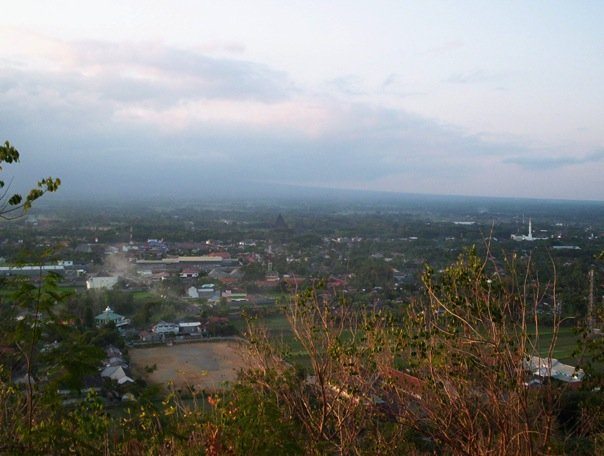
Yogyakarta and Mt Merapi in the background, obscured by clouds
Saturday in Yogyakarta just wasn’t my day. I was hot and tired, my legs were hurting, I had blisters on the souls of my feet. we didn’t end up seeing as much of the city as we had hoped, when we arrived at the city centre my camera ran out of batteries, a bird shat on my head and then when I sat down for dinner the brittle plastic seat snapped under me.
On Saturday night we saw a traditional Hindu theatrical puppet performance at Yogyakarta’s City Museum. The performance was interesting, but ultimately didn’t hold our interest for the full two hours. It was accompanied by music from the gamelan, a traditional Indonesian musical instrument made up of various cymbals, gongs, xylophone-style keys and drums. This musical director seemed fairly hung up on one particular gong which sounded more like a drill, so we endured an hour and half before heading back to the hotel.
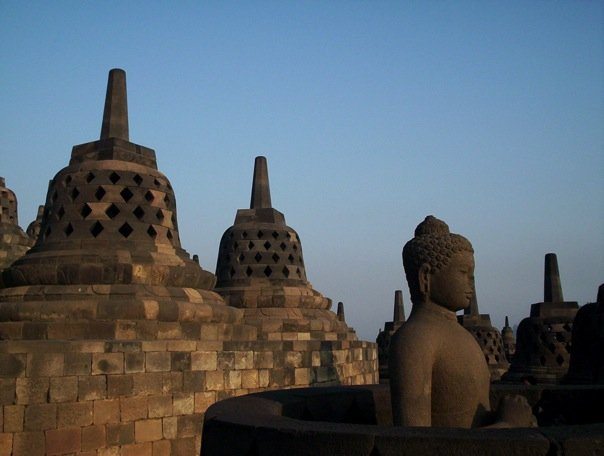
Borobudur
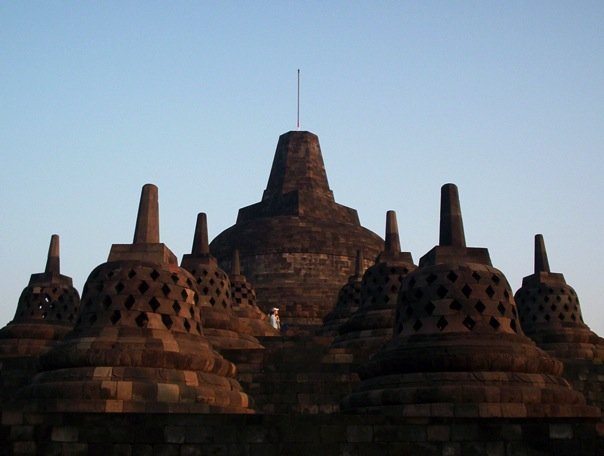
Borobudur
Early on Sunday we awoke again with the azan (call to prayer) but this time jumped in a minibus for Borobudur, a 1200-year old Buddhist civilization just 50 kilometres from Yogyakarta. Borobudur is best visited at sunrise, and that’s exactly what we did. The civilisation’s inhabitants are long gone, and the city is on the World Heritage list, but that still doesn’t detract from the awe-inspiring relics. We ascended the steps towards the central stupa (tower) just as dawn broke through the mist in the nearby rainforest. So well preserved are the engravings in the walls that you can still follow the stories they tell. What is unclear however is exactly why the citizens of Borobudur disappeared.
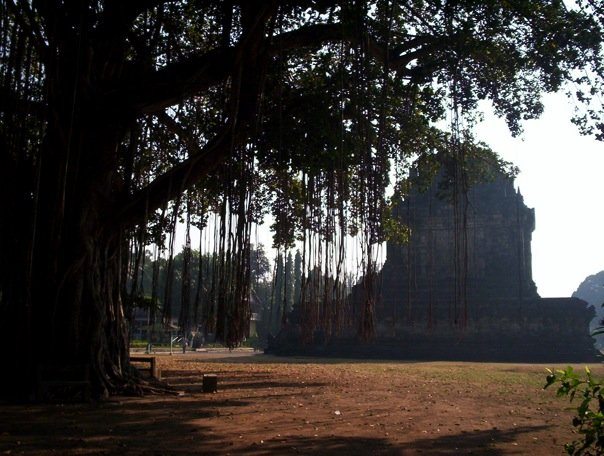
Pawon Temple, near Borobudur
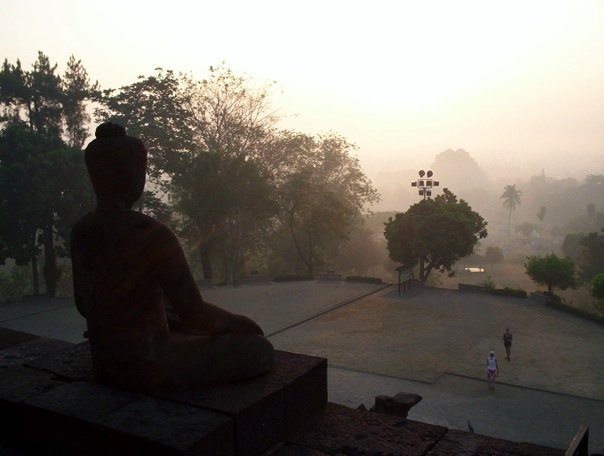
Borobudur
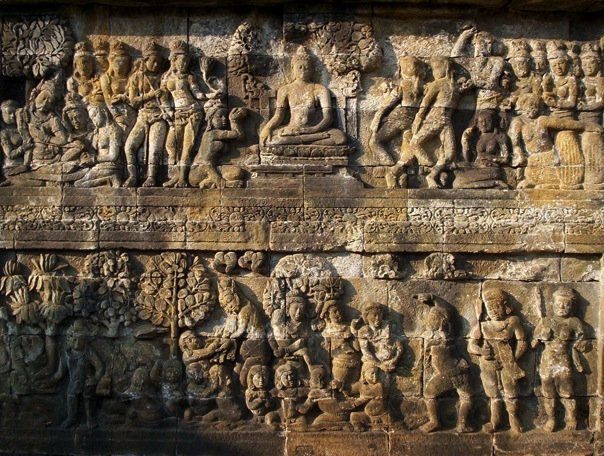
Borobudur

Borobudur
Modern Yogyakarta and the ruins of Borobodur are built in the shadow of Mount Merapi, an angry volcano which still threatens to erupt; perhaps an eruption was what forced the Buddhists of Borobudur to flee. Walking around Borobudur, we lost track of time and almost missed the tour bus back to Yogyakarta. Not that there was any shortage of buses; half the world’s population seemed to be streaming in from their respective tours as the morning rolled on.
Back in Yogyakarta, Sunday was particularly hot and sticky. We retreated to the cool of a nearby cafe, sipped cool drinks, and realised just how ridiculously tired we were; all it took was two iced teas and a bit of Richard Marx and we were all over the shop. More concerning was a drink on the menu called “Happy Soda”. Don’t ask.
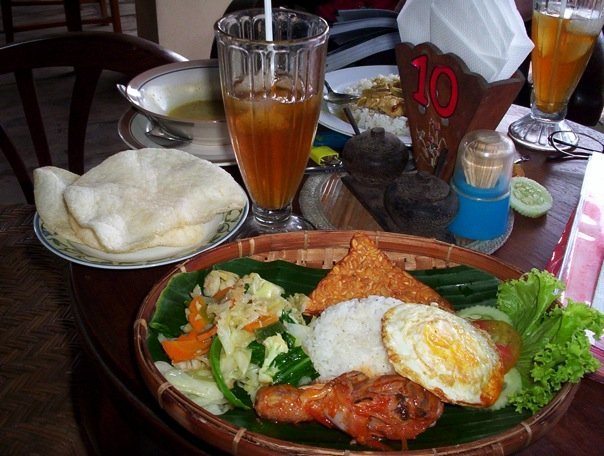
Nasi Campur with Ice Tea at Bamboo Restaurant
More from my trip to Yogyakarta next week!




Borobudur – never heard of it but it looks amazing!
It is pretty amazing… another great reason to visit 😀
Borobudur – nope….. not heard of it, but it does sound like a fab place to visit. Especially keen on that Nasi Campur. Mmmm!
Hehehehe yes the Nasi Campur is but one of the highlights of Borobudur 😉